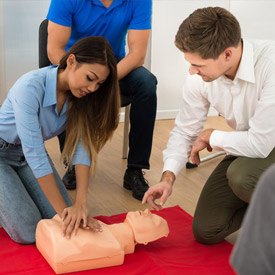First aid may seem like an easy skill that does not need much training to understand, but with proper first aid training and good recognition techniques, proper care can be provided to those injured, and further injury can be prevented. The recognition of an injury may also require an Emergency Action Plan (EAP) to be activated if the injury is serious enough for advanced medical personnel to take over.
First aid may be required for various injuries. These can include head, spinal, muscle, bone, joint, and soft tissue injuries. Each of these injuries require their own specific kinds of care, but it is important that in the case of any injury to follow the procedures established at your aquatic facility.
.jpg)
First Aid Training and DOTS
Taught often in first aid training is proper first aid care can be determined by using the acronym DOTS to recognize signs and symptoms. DOTS stands for:
- Deformity
- Open wound
- Tenderness (or pain)
- Swelling
Remember this acronym to identify injuries so proper care can be administered.

First Aid Training and Treatment
First aid treatment can be simplified into two main components, removing whatever may be causing the injury and then preventing further injury. If these two components can be achieved, then the injured person will be much better off, especially if advanced care is needed. The following actions should be taken for the following injuries:
- The care for general external bleeding involves applying direct pressure and bandaging over the wound.
- RICE (Rest, Ice, Compress, Elevate) is the treatment for closed wounds (bruises), sprains, and strains.
- Burns are classified according to the extent of tissue damage. Superficial burns are classified as first degree, partial thickness burns as second degree, and full- thickness burns as third degree. The first step in burn care is to stop the burning process.
- To care for a knocked-out tooth, stop any bleeding and, if the guest is an adult and alert, place the missing tooth inside the guest’s lower lip; otherwise, place the tooth in saliva, milk, or slightly salted water.
- To care for a guest with suspected spinal injury, restrict movement of the head and neck.
- Flush any loose objects from the eye with running water.
- Chest injuries can involve rib fractures and require support of the injured side and EMS personnel.
- Shock can occur as a result of severe injury or illness and requires rest, warmth, and EMS personnel
In the case of someone needing CPR, EMS will need to be contacted and CPR should be administered. For more information on first aid training, CPR and what to do, you can visit our website’s first aid information section:
